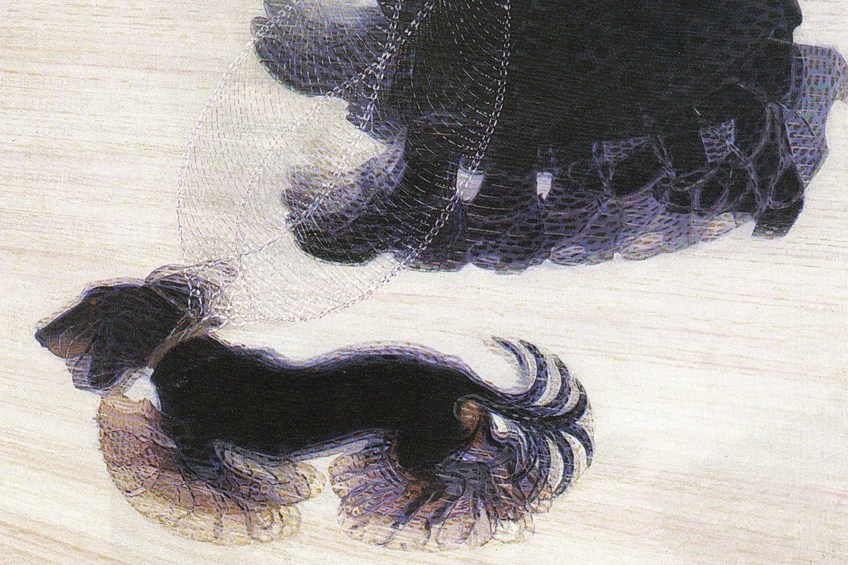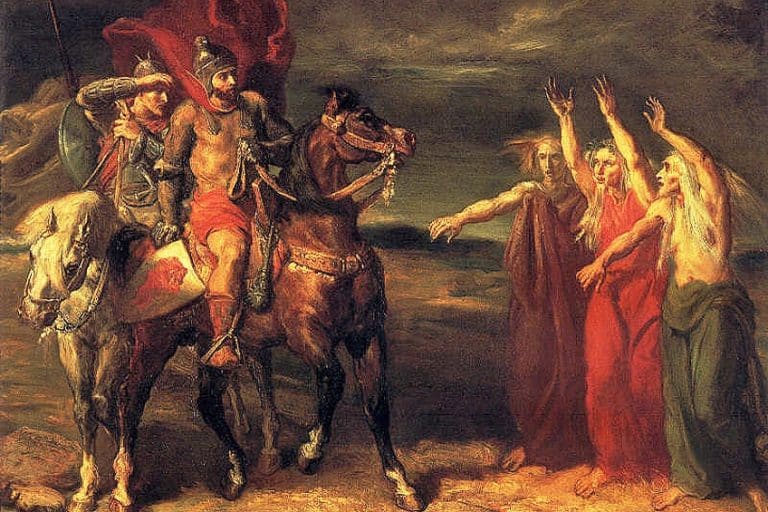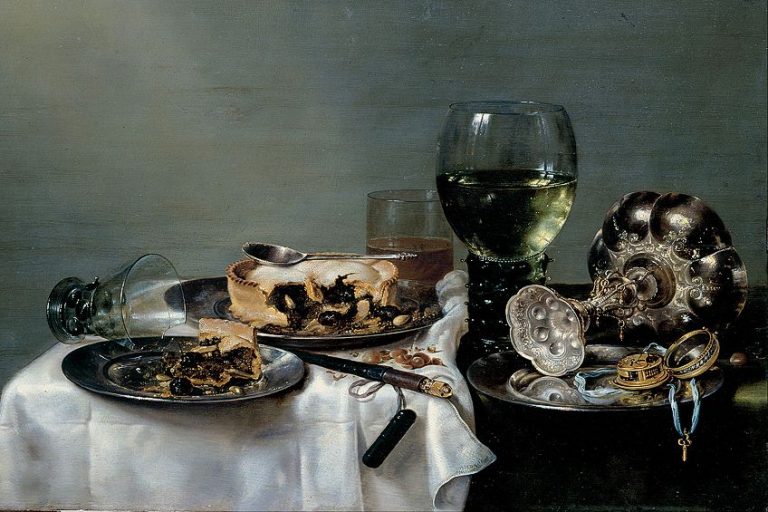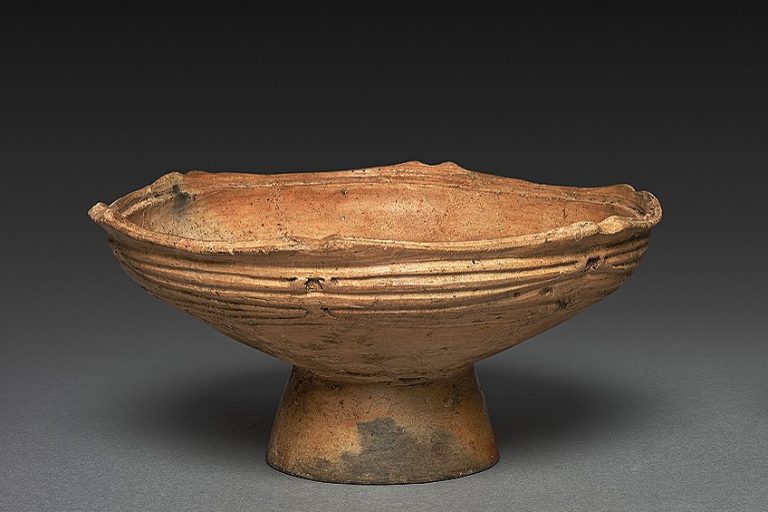Movement in Art – Exploring the Use of Visual Movement in Art
The words “action”, “motion”, and “dynamism” all suggest the idea of movement. Movement is one of the principles of art and it provides energy and vibrancy to any form of art. In this article, we will explore the question, “What is movement in art?” and provide a few examples of movement in art.
What Is Movement in Art?
The movement in art definition centers around the idea that our, the viewers, the focus is “guided” in a composition, usually towards the primary focal point or even around the entire composition. Furthermore, movement also means the visual representation of movement, for example, a speeding car or someone running, or the illusion or implication of it, in other words where it is suggested, for example, someone standing off-center or in a posture suggestive of dancing.
Movement is an essential part of any composition as it gives the artwork character and it tells us, the viewers, what is happening. It creates visual effects that inform the meaning of the artwork, otherwise, we would be staring at static stories and lose interest halfway through.

Movement in art is one of the several other principles of art, these are, namely, balance, emphasis, pattern/repetition, harmony, unity, scale, proportion, and variety. To apply and portray movement in an artwork artists can utilize several techniques, these are called art elements and include color, value, line, shape, form, space, and texture.
With these numerous techniques, we can depict visual movement in art and strategically place or arrange these to create a flow or pathway in the composition. Think of these art elements as the guideposts along this pathway; each one is placed in a way that allows us to follow the route and get to the destination.
In this case, it is the primary focal point in an artwork, which can be a singular figure or an object or even a visual narrative throughout the painting.

The Types of Movement in Art
So, how do we show movement in art? Let us explore this question by looking at several types of movement we find in art, namely, the “physical” representation, implied movement, the illusion of movement, and guiding movement, which leads our gaze around the artwork or towards the focal point.
These are all combined with the art elements and principles more commonly utilized, namely, color, line, texture, space, rhythm, and pattern/repetition, all of which we will mention in the different types of movement in art.
It is important to note that movement in art can also be conveyed by using all the types of movement in one composition; these are all interchangeable.
Physical Representation of Movement
The physical representation of movement is when motion is overtly or observably depicted in the artwork. This can be someone dancing, a crashing wave, wind blowing, a driving car, someone playing sports, or any other motion or action.
Movement like this can be depicted with different lines, of which there are static and dynamic lines. Dynamic lines are diagonal, curved, or zigzag, and if these are arranged in patterns or repetitions, it will create a rhythm to the composition, resulting in a sense of movement.

Additionally, horizontal, or vertical lines can also create movement and suggest different types of motions like sideways, upwards, or downwards. If a vertical line is placed slightly off-center or slanted, it can suggest that something is in motion, or the idea of motion, which we will discuss in the implied movement section below.
Examples of movement in art that show physical movement can be widely seen in artworks from movements like Futurism and Pop Art, to name a few.
The Pop Art comic strip In the Car (1963) by Roy Lichtenstein depicts two figures in a car, however, we can clearly see the car is moving, and seemingly speeding. This is depicted by Lichtenstein’s use of horizontal lines by the women in the foreground and in the background, next to the man.
Another example of motion is in the Futurist oil on canvas, Dynamism of a Dog on a Leash (1912) by Giacomo Balla. This composition depicts a woman walking her dog; however, we only see the dog and the woman’s lower legs and feet. Balla creates apparent motion by using repetition through the superimposition of the figures and the leash, he also blurs the figures, which adds to the effect of movement.
Movement was often explored by the Futurist artists; with the onset of the Modern era, they aimed to depict speed and industry in their compositions. Another example is the oil painting Dynamism of a Cyclist (1913) by Umberto Boccioni. Here, we see what appears to be more of an abstracted composition, however, Boccioni utilizes dynamic lines, it has been described as “lines of force”, and curves to give the impression of movement.
There are also varying textures and colors, creating a sense of depth, further adding to the motion.

Implied Movement
We can look at implied movement as an action that is about to occur or the suggestion of a movement. This can also involve the transition between two movements. An example often used is the transition between someone walking and running, or dancing, or someone throwing a ball. This can be depicted by placing the focus on the figure’s posture, which can be “off-center” or “off-balance” to convey a sense of transition in motion.
This is because we intuitively know what movements will follow when a body is off-balance, and if this posture is set in a specific scene, we will be given the context of it.
An example often referred to of this type of movement in art is El Jaleo (1882) by the American artist John Singer Sargent. Here we see how the Spanish dancer is portrayed in a precarious posture, so to say, it appears as if she will topple over any moment because of her off-balance.

However, we can also see that she is a dancer and there are musicians in the background, which gives us more visual context and we can assume she is in the mid-movements of dancing. In this example, we see how the art element of space is utilized because of how Sargent arranges the figure’s posture in the compositional space, giving her the dance floor in the foreground to transition into different motions.
Another famous example is the woodblock print titled The Great Wave off Kanagawa (1820-1831) by the Japanese Katsushika Hokusai. Here, we see a large, looming, wave, seemingly in mid-air, but suggesting its imminent crash onto the boats below.
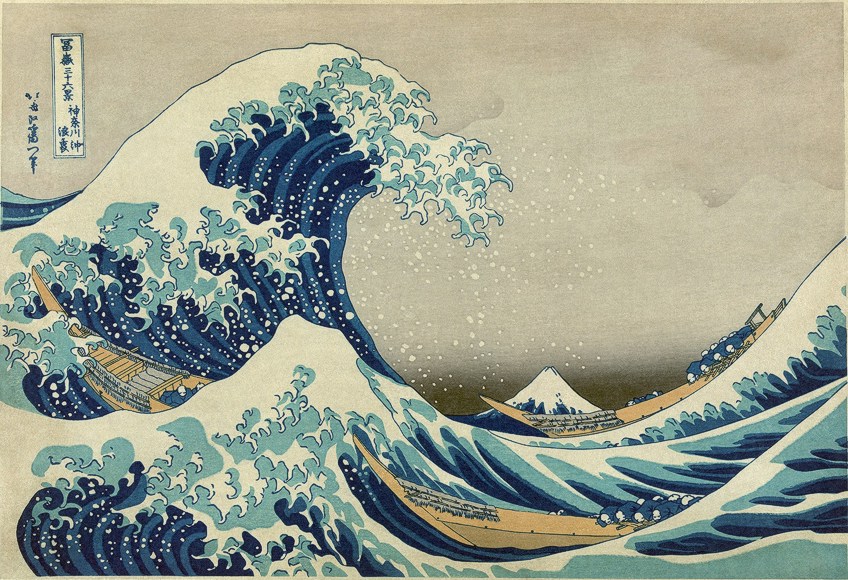
Its motion is emphasized using color, the white foam on the water, the texture of the wave and water, and the choppy and curved lines of the waves, some are large, and some are short. There are also various white dots in mid-air from the foamy tips of the waves, all suggesting the chaos of the crashing waters.
The Illusion of Movement
This refers to movement created through illusory effects in compositions, often recalling the artworks from the Op Art style, which gained traction in the 1960s, but also decades before. Op art is worth noting here because it is a style of art that utilizes several elements of art like color, lines, patterns, and space to create optical illusions.
While some are black and white, others are in color, and the juxtapositions of various elements emphasize movement. It is an art style typically characterized through geometric and abstracted compositions.
Some examples of movement in art explored through optical illusions include Zebra (1937) by Victor Vasarely, which depicts two rollicking Zebras seemingly intertwined by the black and white colors, curves, and lines that make up their bodies.
The combination of these elements creates a dynamic sense of movement between the two animals.
Another example includes Vasarely’s Vega III (1957 to 1959), where we see black and white checkered patterns arranged in such a manner that it appears concaved and convexed. With this, a wave-like motion is created, despite there being no real movement at play.
Guiding Movement
Guiding movement simply means that a composition guides our gaze, so to say; it can be towards a singular focal point or a busier composition with various narratives. This can be achieved through lines and perspective, namely, linear perspective. A famous example, often used, is Leonardo da Vinci’s The Last Supper (1495 to 1498).
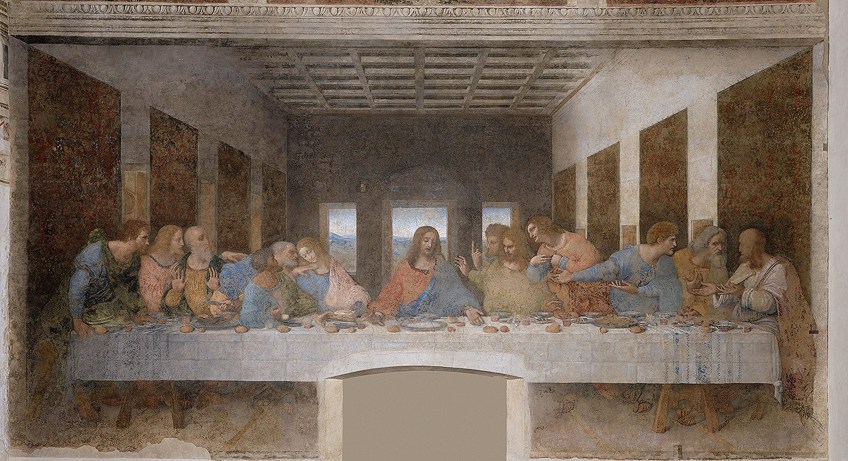
In this composition, we see Jesus Christ sitting at the center of a long horizontal table; he is surrounded by his apostles. Behind him are three windows and surrounding walls, each with, what appears to be four tapestries hanging from it.
Da Vinci utilized the convergence of lines that emphasize the figure of Christ; the point of focus, otherwise called the vanishing point, is at Christ’s head. Additionally, the windows behind create a lighting effect, further emphasizing his figure.
Other examples of visual movement in art with multiple narratives or figures are The Four Horsemen of the Apocalypse (c. 1498) by Albrecht Dürer, The Battle of San Romano (c. 1435 to 1460) by Paolo Uccello, and the Akbarnama (c. 1590 to 1595) illustration titled Akbar on horseback, hunting animals within an enclosure.

Summary of Movement in Art
| Movement in Art | Characteristic | Examples of Movement in Art |
| Physical Representation of Movement | This is when movement is clearly or overtly depicted in a composition. | In the Car (1963) by Roy Lichtenstein Dynamism of a Dog on a Leash (1912) Giacomo Balla Dynamism of a Cyclist (1913) by Umberto Boccioni |
| Implied Movement | This is the suggestion of a movement about to occur or the transition between two movements. | El Jaleo (1882) by John Singer Sargent The Great Wave off Kanagawa (1831) by Katsushika Hokusai |
| Illusion of Movement | This is movement or the sense of motion created through illusory effects created by various art elements. | Zebra (1937) and Vega III (1957 to 1959) by Victor Vasarely |
| Guiding Movement | This is when the viewers’ gaze is guided along the composition to a focal point, sometimes it can be one figure or multiple narratives within a composition. | The Last Supper (1495 to 1498) The Four Horsemen of the Apocalypse (1498) by Albrecht Dürer The Battle of San Romano (c. 1435 to 1460) by Paolo Uccello Akbar on horseback, hunting animals within an enclosure (Mughal Empire, Akbarnama c.1590 to 1595, illustration)
|
In this article, we explored one of the principles of art called movement and briefly looked at what the movement in art definition entails. We also explored the different types of movement, namely its physical representation in an artwork, implied movement, the illusion of movement, and guiding movement. Within each type, there are several art elements we can apply to emphasize motion.
Principles of Art – Further Readings
- Principles of Art main article
- Emphasis in Art
- Unity in Art
- Rhythm in Art
- Texture in Art
- Proportion in Art
- Balance in Art
- Harmony in Art
Movement is an important art principle because it gives a composition its “joie de vivre”, so to say. Without any indicated movement in an artwork, it would be static and potentially verge on boring, unless there is no movement intended. Depicting movement in a flat two-dimensional artwork is almost like inflating a balloon, it gives it life, buoyancy, and moves in a specific direction.
Read also our movement art web story.
Frequently Asked Questions
What Is Movement in Art?
Movement in art is one of the principles of art and it is used to create dynamism and motion in an artwork, it also creates more meaning in composition and what the narrative is about. Movement can either guide the viewers’ gaze around the composition or lead it to a focal point, it can be physically represented, implied, or created through illusory effects.
What Are the Techniques to Show Movement in Art?
Movement in art can be depicted by utilizing the elements of art, namely, color, line, texture, shape, form, value, and space. Through the arrangement of these elements, different types of movement can be achieved.
Alicia du Plessis is a multidisciplinary writer. She completed her Bachelor of Arts degree, majoring in Art History and Classical Civilization, as well as two Honors, namely, in Art History and Education and Development, at the University of KwaZulu-Natal, South Africa. For her main Honors project in Art History, she explored perceptions of the San Bushmen’s identity and the concept of the “Other”. She has also looked at the use of photography in art and how it has been used to portray people’s lives.
Alicia’s other areas of interest in Art History include the process of writing about Art History and how to analyze paintings. Some of her favorite art movements include Impressionism and German Expressionism. She is yet to complete her Masters in Art History (she would like to do this abroad in Europe) having given it some time to first develop more professional experience with the interest to one day lecture it too.
Alicia has been working for artincontext.com since 2021 as an author and art history expert. She has specialized in painting analysis and is covering most of our painting analysis.
Learn more about Alicia du Plessis and the Art in Context Team.
Cite this Article
Alicia, du Plessis, “Movement in Art – Exploring the Use of Visual Movement in Art.” Art in Context. March 9, 2022. URL: https://artincontext.org/movement-in-art/
du Plessis, A. (2022, 9 March). Movement in Art – Exploring the Use of Visual Movement in Art. Art in Context. https://artincontext.org/movement-in-art/
du Plessis, Alicia. “Movement in Art – Exploring the Use of Visual Movement in Art.” Art in Context, March 9, 2022. https://artincontext.org/movement-in-art/.


